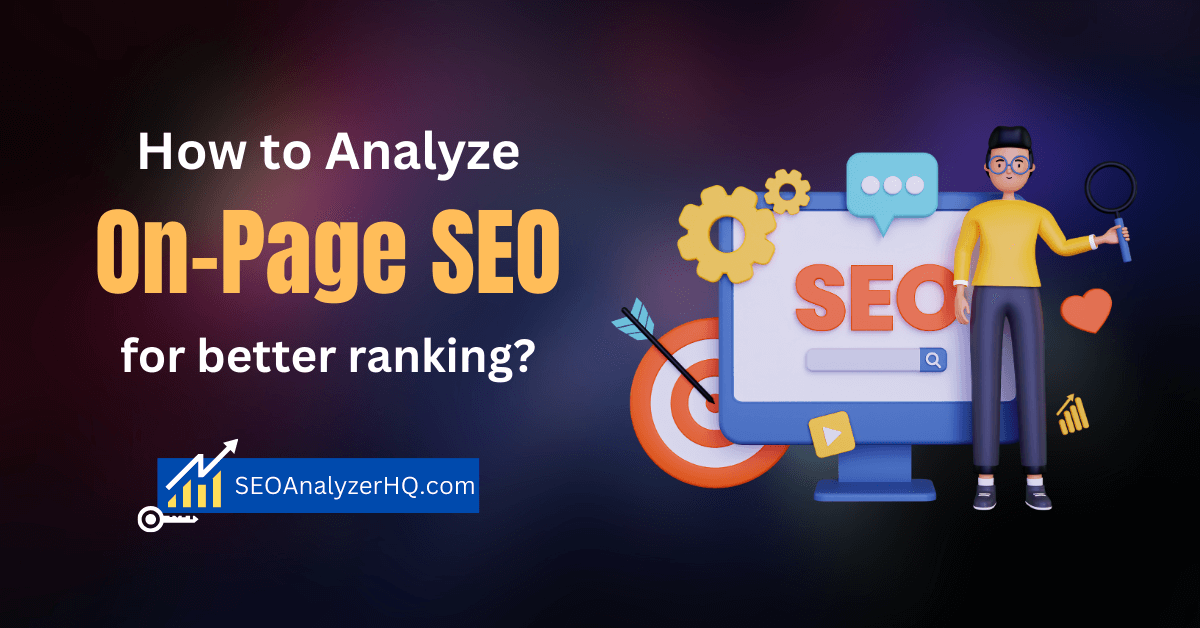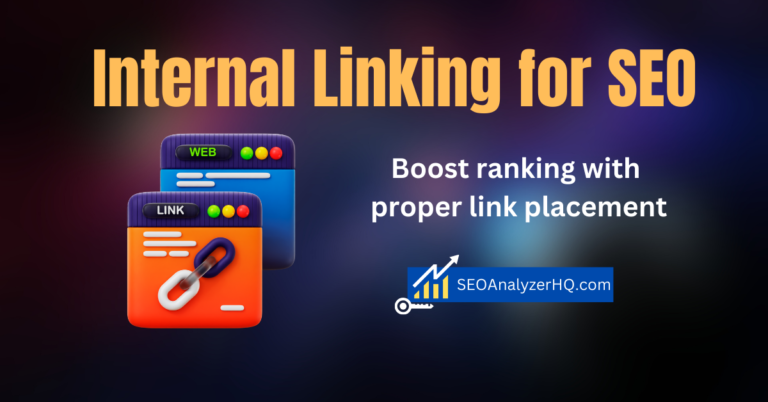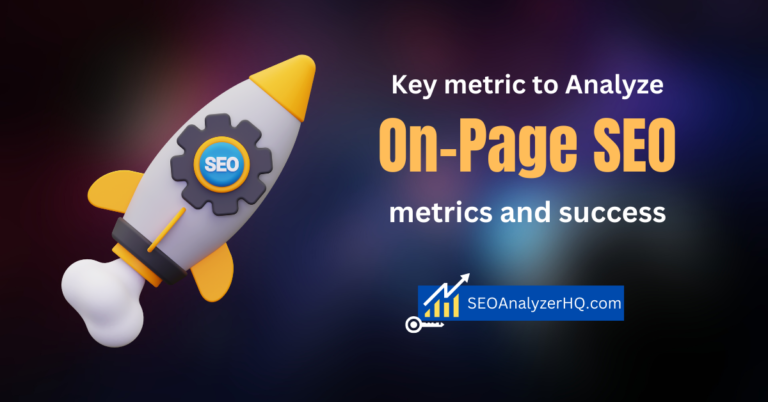How to Analyze and Improve Your On-Page SEO for Better Rankings

Did you know that a well-optimized webpage can significantly boost your search engine rankings? On-page SEO is crucial for improving your site’s visibility and ranking on search engines. Unlike off-page SEO, which focuses on backlinks, on-page SEO deals with factors within your website that influence rankings. In this guide, we’ll walk you through essential techniques and tools for analyzing and improving on-page SEO.
Understanding On-Page SEO
On-page SEO refers to the practice of optimizing individual web pages to rank higher and earn more relevant traffic in search engines. It encompasses various components including:
- Title Tags: These are critical for both search engines and users.
- Meta Descriptions: Summarize the content of your page.
- Header Tags: Structure your content effectively.
- Content: The heart of your page, which should be high-quality and relevant.
Understanding these components is the first step toward improving your on-page SEO.
How to Conduct an On-Page SEO Analysis
Step 1: Analyze Your Current On-Page SEO Performance
Begin by evaluating how well your current on-page SEO is performing. Use tools like Google Analytics and Google Search Console to:
- Check Current Keyword Rankings: See where your keywords are currently ranking.
- Review Site Traffic and User Behavior: Understand how users are interacting with your site.
By analyzing these metrics, you can identify areas that need improvement.
Step 2: Evaluate Title Tags and Meta Descriptions
Title tags and meta descriptions are crucial for both search engines and users. Make sure they are:
- Unique and Relevant: Avoid duplicate tags and descriptions across your site.
- Optimized with Target Keywords: Include your primary keywords to enhance relevance.
These elements impact click-through rates (CTR) and should be crafted carefully.
Step 3: Assess Header Tags and Content Structure
Proper use of header tags (H1, H2, H3) helps in structuring your content:
- Optimize Headers: Include relevant keywords in headers.
- Ensure Content Hierarchy is Logical: Organize content so that it’s easy to follow.
Effective header tags improve readability and SEO.
Step 4: Check for Keyword Optimization
Ensure your content is optimized with keywords:
- Analyze Keyword Usage: Check where and how often your keywords are used in content and headers.
- Avoid Keyword Stuffing: Maintain a natural flow of text.
Keyword optimization should be done thoughtfully to enhance relevance without compromising readability.
Step 5: Evaluate Internal Linking
Internal linking helps with site navigation and SEO:
- Use Descriptive Anchor Text: Ensure your anchor text is relevant and informative.
- Improve Site Navigation: Facilitate better user experience through strategic internal links.
Good internal linking supports both user experience and SEO.
Step 6: Analyze Page Load Speed and Mobile-Friendliness
Page load speed and mobile responsiveness are crucial for SEO:
- Measure Page Speed: Use tools like Google PageSpeed Insights.
- Ensure Mobile Friendliness: Test how your site performs on mobile devices.
Faster load times and mobile optimization can significantly improve user experience and rankings.
Best Practices for Improving On-Page SEO
1. Optimize Content Quality and Relevance
Focus on creating high-quality, engaging content:
- Use multimedia elements: incorporate images, videos, and infographics.
- Ensure content is valuable: Provide actionable insights and information.
High-quality content is a key factor in ranking well.
2. Enhance User Experience
Improve the design and usability of your site:
- Mobile Responsiveness: Ensure your site works well on all devices.
- Clear Navigation and CTAs: Make it easy for users to find what they need.
A positive user experience supports SEO and encourages repeat visits.
3. Regularly Update Content
Keep your content fresh and relevant:
- Review and Update Old Posts: Regularly check for outdated information.
- Add New Information: Keep your content up-to-date with the latest trends and data.
Updating content helps maintain its relevance and effectiveness.
Frequently Asked Questions (FAQs)
What is on-page SEO?
On-page SEO refers to the practice of optimizing individual web pages to rank higher and earn more relevant traffic in search engines. It includes elements such as title tags, meta descriptions, headers, and content.
Why are title tags important for SEO?
Title tags are important because they tell search engines and users what the page is about. They should be unique and include relevant keywords to improve search visibility and click-through rates.
How often should I update my content for SEO?
Content should be updated regularly to ensure it remains relevant and accurate. Review and update old posts at least once a year or whenever significant changes occur in your industry.
What tools can I use to analyze on-page SEO?
Tools such as Google Analytics, Google Search Console, and various SEO audit tools can help analyze on-page SEO. These tools provide insights into keyword rankings, site traffic, and other important metrics.
How can I improve my page load speed?
To improve page load speed, optimize images, leverage browser caching, and minimize HTTP requests. Tools like Google PageSpeed Insights can provide specific recommendations for speeding up your site.
Final words on On-Page SEO Analysis
Effective on-page SEO can lead to improved search rankings and better user engagement. Start by implementing a few changes from this guide and monitor the impact on your site’s performance. Share your experiences with on-page SEO in the comments or ask any questions you might have!


